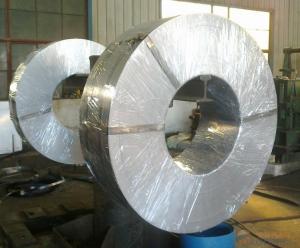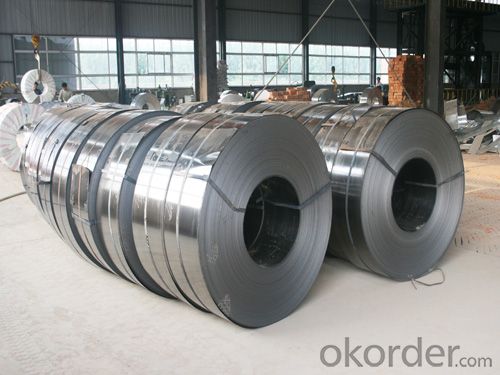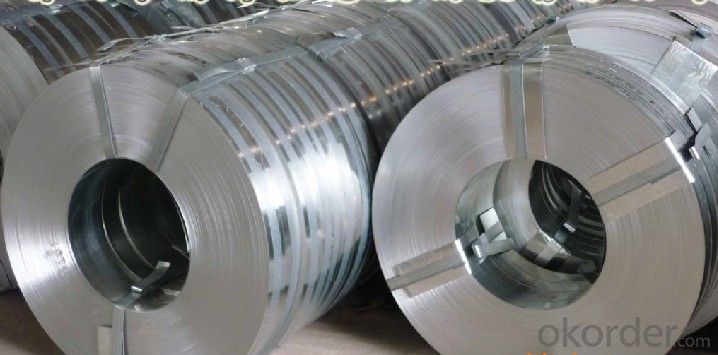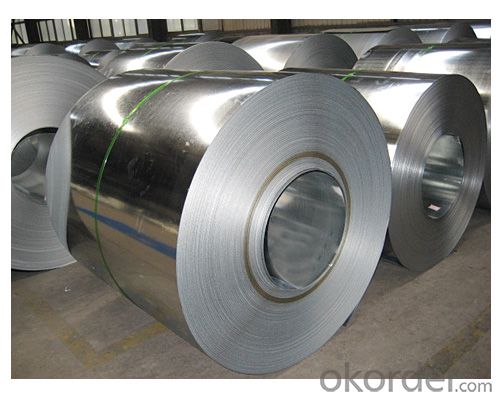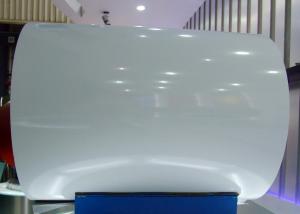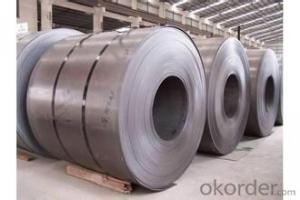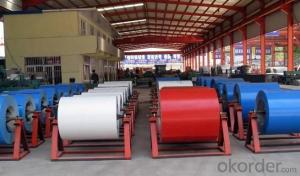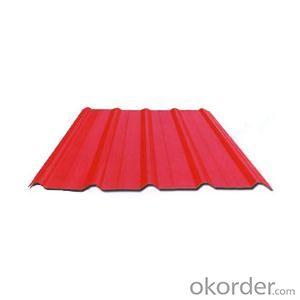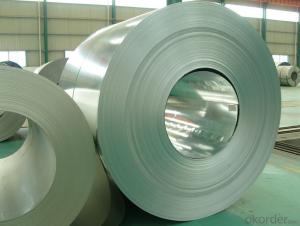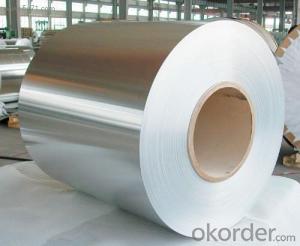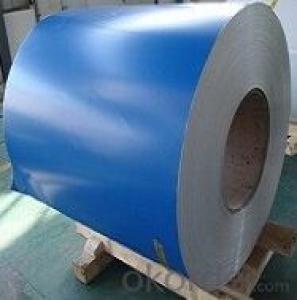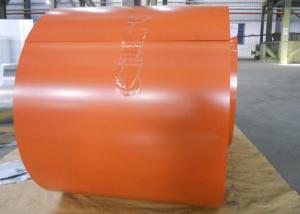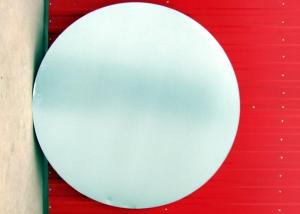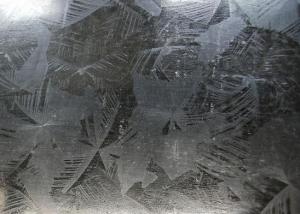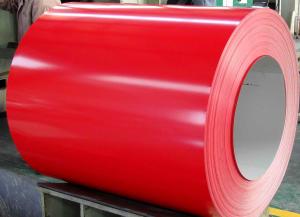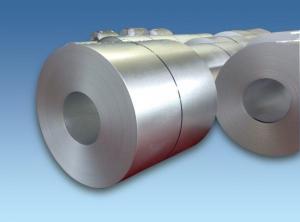Hot-dip Zinc Coating Steel Building Roof Walls --China Best
- Loading Port:
- China main port
- Payment Terms:
- TT OR LC
- Min Order Qty:
- 50 m.t.
- Supply Capability:
- 10000 m.t./month
OKorder Service Pledge
OKorder Financial Service
You Might Also Like
Hot-dip Zinc Coating Steel Building Roof Walls --China Best
1.Structure of Hot-Dip Galvanized Steel Sheet Description:
Hot-dip galvanized steel coils are available with a pure zinc coating through the hot-dip galvanizing process. The hot-dip process is the process by which steel gets coated in layers of zinc to protect against rust. It is especially useful for countless outdoor and industrial applications. Production of cold formed corrugated sheets and profiles for roofing,decking, tiles, sandwich walls, rainwater protective systems.
2.Main Features :
• Excellent process capability
• Workability, durability
• Excellent anticorrosive property
• Good visual effect
3.Hot-Dip Galvanized Steel Sheet Images:

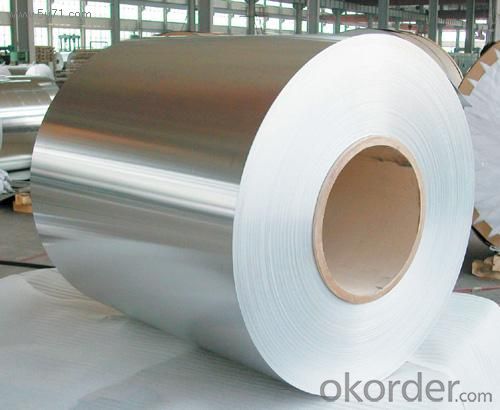
4.Hot-Dip Galvanized Steel Specification:
Standard: ASTM, JIS,EN
Grade: CS, DX51D+Z,SGCC, SS 230~550,S220GD+Z~S550GD+Z, SGC340~SGC570
Thickness: 0.18mm~5mm
Width: max 2000mm
Coil weight:3-12 MT
Surface structure: zero spangle, regular spangle or minimum spangle
Surface treatment: Chromate treatment, Oiled/dry, skinpassed/non-skinpassed
5.FAQ :
We have organized several common questions for our clients,may help you sincerely:
1.How to guarantee the quality of the products?
We have established the international advanced quality management system,every link from raw material to final product we have strict quality test.
2. How long can we receive the product after purchase?
Usually within thirty working days after receiving buyer’s advance payment or LC. We will arrange the factory manufacturing as soon as possible. The cargo readiness usually takes 15-30 days, but the shipment will depend on the vessel situation.
- Q: I'm talking about the sort of carbon fiber that's used in the auto industry (mostly in supercars).If an object made of steel were to be copied by an exact same object, but made of carbon fiber - how lighter would the carbon fiber object be?For example, if a table is made of steel and it weighs X, how much will it weigh if it were made of carbon fiber?Thanks.
- Carbon fiber doesn't really refer to a single material (steel doesn't either, but most steels have similar densities). Pure carbon fiber is just that, fibers made of 90+% carbon. Carbon fiber in the context of cars usually refers to carbon fiber-reinforced polymers rather than plain woven fibers. The polymer adds rigidity to what would otherwise just be like a sheet of fabric. The density depends on the polymer used and the ratio of polymer:fiber. For 50% fiber by volume in epoxy, it has a density of 1.6 g/cm^3. Steel has a density of ~7.8 g/cm^3. So, by volume, steel is almost 5 times heavier.
- Q: What are some characteristics of steel.
- Characteristics Of Steel Hardening. - The characteristic difference between steel and pure wrought iron is as follows: - When steel is raised to a red heat and then suddenly cooled, it becomes hard and brittle. This process, which is known as hardening, has no effect upon pure wrought iron. Tempering is a characteristic of steel which distinguishes it from cast iron. If steel has been hardened by being heated and suddenly cooled, as above described, it may be softened again by applying a lower degree of heat and again cooling. This is known as tempering. Cast iron, on the contrary, though it is hardened by the first process, cannot be softened by the second. When a bar of steel is struck it gives out a sharp metallic ring, quite different from the sound produced by striking wrought iron. Other characteristics of steel are its great elasticity and its retention of magnetism.
- Q: I was cutting a sheet of steel with an angle grinder when suddenly the rate at which the blade was cutting slowed way down. I tried a few different things, and turned off the tool and looked at the blade. It didn't look damaged, but it definitely was not cutting as quickly. I thought either I had hit a harder section of steel (is that possible? It looked pretty uniform) or the blade had lost it's abrasive quality or something. Also, before this happened I had accidentally cut into the wooden sawhorse that was holding up the steel sheet, but I've done that before with no problem. After a short while the problem fixed itself and the rate of cutting went back to a fast normal. Anyone know why this happened?
- Sounds like the abrasive surface got blinded, coated with something that prevented the abrasive particles from touching the steel. It is possible to have vastly different hardnesses in a single piece of steel. Case hardening, carburizing, induction hardening, heat affected zone from welding, differences in work hardening, and presence of inclusions are some of the things that can create hardness variation within a single piece. But... sounds like you are working with a sheet which is unlikely to have any of these conditions. So... it was probably the grinding disk
- Q: How do the sandpaper grits compare with different coarse levels of steel wool? For example, I'm finishing a homemade entertainment center, and using a tinted polyurethane, and it says to use 000 grade steel wool, but mine is #3, could I use some sanpaper instead, and what grit?
- Steel wool and wax is for the final buff after the finish coat. Sanding will scratch the finish and should only be done before the finish coat. Steel wool and wax have been used as the final finish to remove rough areas and buff the finish for a long time.
- Q: How are steel coils annealed to improve their properties?
- Steel coils are annealed by heating them to a specific temperature and then slowly cooling them, which allows for the recrystallization of the steel. This process helps to relieve internal stresses, improve the material's ductility, and enhance its overall mechanical properties.
- Q: Can steel coils be coated with magnetically attractive materials?
- Yes, steel coils can be coated with magnetically attractive materials. This process is commonly known as electromagnetic coating or magnetic coating, where a thin layer of magnetically attractive material, such as iron or nickel, is applied onto the surface of the steel coil. This coating enhances the magnetic properties of the steel, making it more responsive to magnetic fields and enabling it to attract or be attracted by magnets.
- Q: What are the different methods of levelling steel coils?
- There are several methods used for leveling steel coils, depending on the specific requirements and applications. Some of the common methods include: 1. Roller Leveling: This method involves passing the steel coil through a series of rollers that exert pressure on the material, effectively reducing any residual stresses and removing any waviness or curvature. Roller leveling is commonly used for thinner gauge coils where a high degree of flatness is desired. 2. Stretch Leveling: This method involves stretching the steel coil beyond its yield point to eliminate any shape defects. The coil is subjected to tension in a stretcher leveler machine, which elongates the material and removes the inherent stresses. Stretch leveling is often used for thicker gauge coils where a higher degree of flatness is required. 3. Temper Milling: This method involves passing the steel coil through a temper mill, which is a cold reduction mill equipped with work rolls on top and bottom. The temper mill imparts tension on the coil, flattening it and improving its shape and surface quality. This method is typically used for higher strength steel grades. 4. Corrective Leveling: This method is employed when the steel coil has significant shape defects, such as wavy edges or center buckles. Corrective leveling involves selectively removing material from specific areas of the coil to achieve a flat and uniform surface. This process is often done using laser or plasma cutting machines. 5. Tension Leveling: This method is similar to stretch leveling, but it involves applying tension to the coil without exceeding its yield point. Tension leveling utilizes a series of bridle rolls to stretch the material, thereby removing any internal stresses and leveling the coil. This method is commonly used for higher strength and thinner gauge coils. These methods can be used individually or in combination depending on the specific requirements of the steel coil and the desired end product. Each method has its advantages and limitations, and the choice of leveling method will depend on factors such as the coil thickness, material properties, and desired flatness.
- Q: How do steel coil manufacturers manage inventory?
- Steel coil manufacturers manage inventory through various strategies and techniques to optimize production, minimize costs, and meet customer demands. Here are some common practices employed by steel coil manufacturers to effectively manage their inventory: 1. Demand forecasting: Steel coil manufacturers analyze market trends, historical sales data, and customer orders to forecast future demand accurately. This helps them determine the required inventory levels and plan production accordingly. 2. Just-in-time (JIT) inventory: Many steel coil manufacturers follow the JIT inventory system, where they maintain minimal inventory levels by receiving raw materials shortly before production and delivering finished goods immediately after production. This approach minimizes carrying costs and reduces the risk of excess inventory. 3. Supplier collaboration: Close collaboration with suppliers is crucial to manage inventory effectively. Steel coil manufacturers work closely with their suppliers to ensure timely delivery of raw materials, monitor quality, and maintain consistent supply. Regular communication and sharing of production forecasts help suppliers plan their inventory accordingly. 4. Safety stock: Steel coil manufacturers maintain a certain level of safety stock to account for unpredictable fluctuations in demand, supply chain disruptions, or delays in raw material deliveries. This acts as a buffer to avoid stockouts and maintain customer satisfaction. 5. Inventory control systems: Implementing modern inventory control systems, such as Enterprise Resource Planning (ERP) software, allows steel coil manufacturers to track inventory levels, monitor stock movements, and automate various inventory management processes. These systems provide real-time data and analytics, enabling better decision-making and improved inventory accuracy. 6. Efficient production planning: Steel coil manufacturers optimize production planning to minimize inventory holding costs. They schedule production based on demand forecasts, prioritize orders, and aim for efficient production runs to reduce setup times and material wastage. 7. Regular inventory analytics: Steel coil manufacturers regularly analyze their inventory data to identify slow-moving items, obsolete stock, or excess inventory. By identifying such issues, they can take corrective actions like offering discounts, initiating sales promotions, or adjusting production schedules to prevent inventory buildup. Overall, effective inventory management is crucial for steel coil manufacturers to maintain a lean and efficient operation while meeting customer demands. By applying these strategies, manufacturers can strike a balance between supply and demand, reduce costs, and improve customer satisfaction.
- Q: What are the dimensions of steel coils used in the packaging industry?
- The dimensions of steel coils used in the packaging industry can vary depending on the specific application and requirements. However, typical dimensions for steel coils used in packaging range from 0.15 mm to 3 mm in thickness and 600 mm to 2000 mm in width. The inner diameter of the coil, known as the core, is usually around 508 mm (20 inches), although other sizes such as 610 mm (24 inches) or 762 mm (30 inches) may also be used. The outer diameter of the coil can vary depending on the weight and size of the coil, but it is commonly around 1000 mm to 2000 mm. It is important to note that these dimensions can be customized based on the specific requirements and preferences of the packaging industry.
- Q: I've been looking into battle-ready katanas a lot lately. And I've come across some debates between the best forges and steels to be used for them. The functional katanas I use now are Musashi brand katanas, using 1045 carbon steel. They each cost roughly $200-$250. The straight carbon steels are mentioned in the debates, but they aren't very sophisticated in their design. Now the higher end of this middle class of katana ($250-$1000) uses higher carbon. spring, damascus, and other various steels and combinations. I've heard a lot about the strength of damascus steel and it's cutting power. But I look for more than that. I've also been looking at (and for) durability, flexibility, and how well it stands up to contact. So I guess what I'm asking is for the opinion of people who have used these steels, and an answer on what the community thinks is the best steel for a mid range ($250-$1000) battle-ready katana. Looking forward to some good answers.
- This Site Might Help You. RE: Best battle-ready katana steel? I've been looking into battle-ready katanas a lot lately. And I've come across some debates between the best forges and steels to be used for them. The functional katanas I use now are Musashi brand katanas, using 1045 carbon steel. They each cost roughly $200-$250. The straight carbon...
Send your message to us
Hot-dip Zinc Coating Steel Building Roof Walls --China Best
- Loading Port:
- China main port
- Payment Terms:
- TT OR LC
- Min Order Qty:
- 50 m.t.
- Supply Capability:
- 10000 m.t./month
OKorder Service Pledge
OKorder Financial Service
Similar products
Hot products
Hot Searches
Related keywords
